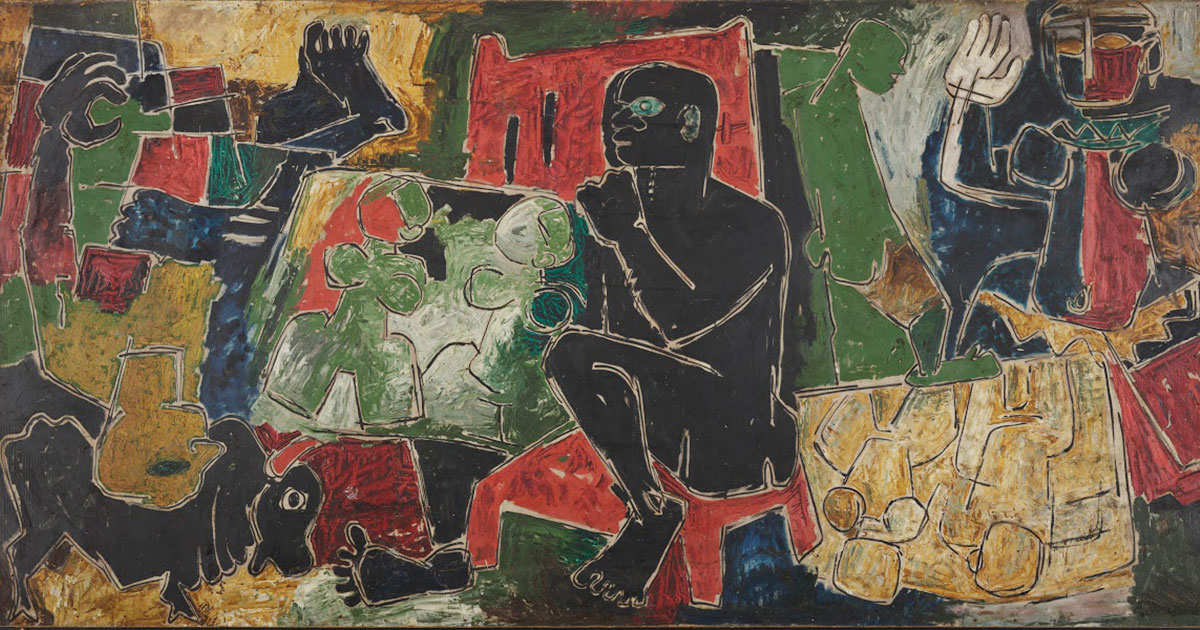A modern textbook for modern art

LAWRENCE — Like the sometimes shocking subjects of his new textbook, Modern Art: A Global Survey From the Mid-Nineteenth Century to the Present (Oxford University Press), author David Cateforis felt the responsibility to live up to modernist poet Ezra Pound’s dictum to “make it new!”

The chair of the Kress Foundation Department of Art History at the University of Kansas, Cateforis worked for six years to write a new textbook that serves as an introduction to modern art but with an expanded, global purview that includes artists from Asia, Latin America, Africa and the Middle East who attained prominence before the late 20th century. It also comes in digital form with web links to more images than are included in the printed book.
“This book is not quite encyclopedic, but it is certainly broad and extensive,” Cateforis said. “Mine is the first modern art textbook to give attention to countries outside of Europe and North America that have not been part of the narrative before. I think that is an important contribution, representative of the global turn in the discipline of art history.”
For Cateforis, “Modernity is all about constant change, constant revolution ... technological and scientific developments.
“In art, modernism often goes hand in hand with the idea of avant-gardism, the idea of pushing forward and exploring or discovering new expressive territory," he said. "To define what modern art is all about, I think the key word is innovation.”
Certain artists and artworks, Cateforis said, transcend novelty to achieve originality and influence. Those are the ones he has featured in his new book.
“Modern art is shocking in different ways at different times,” Cateforis said.
Several such causes célèbres are recounted in the book.
“As an educator, I'm interested in those instances of controversy for what they tell us about conventional tastes versus an artist's attempt to break out of convention and do something that makes us see and think in different ways,” he said.
The forces of modernity — driven by capitalism and colonialism — moved at a different pace in different parts of the globe, Cateforis wrote.
In Chapter 11, “Modern Art in Asia: India, Japan, Korea and China, c. 1900-1945,” he wrote, “Whereas in the West the history of modernism is primarily understood as the history of the avant-garde with its emphasis on constant innovation, the modernisms of early twentieth-century Asia are better conceived as involving mutations within national cultural traditions ... In many cases, eclecticism rather than aggressive originality counted as a modernist strategy for Asian artists.”
Not only are there chapters on the modern arts of India, East Asia, Africa and the Middle East, but the work of previously overlooked artists not from Europe or United States is also woven into other chapters. For instance, in the chapter on mid-century modern architecture, in addition to Frank Lloyd Wright and Le Corbusier, Cateforis includes such figures as Brazil’s Oscar Niemeyer and Lina Bo Bardi and Japan’s Kenzō Tange. Besides its expanded geographic scope, the book also highlights the work of women, many never before featured in modern art textbooks, such as Spain’s María Blanchard and South Africa’s Irma Stern.
Of course, all the familiar names in modern art are covered, such as Van Gogh, Picasso, Dalí, O’Keeffe and Warhol. It also includes late 20th century postmodernism and art of the current century.
“I was concerned with making it informative, accessible and accurate,” Cateforis said.
The KU researcher said he synthesized information from many books and learned a lot himself while writing the extensively footnoted textbook.
“I'm providing interpretations, but I'm not claiming they're the only possible interpretations,” he said. “I want it to be useful to teachers and to the general reader. I want it to be an introduction, a kind of opening. The section on Ko Hŭi-dong, who is known as Korea's first oil painter, introduces him to an English-reading audience that may have little or no knowledge of Korean art history.”
The book likewise includes M.F. Husain, popularly known as India’s Picasso.
“This is the work of the textbook — to introduce into this survey of modern art these important figures from countries outside of Europe and North America that had been neglected or ignored,” he said.
Image: M.F. Husain’s “Man,” 1951. Oil on fiberboard. Credit: Courtesy Peabody Essex Museum, Salem, Massachusetts.